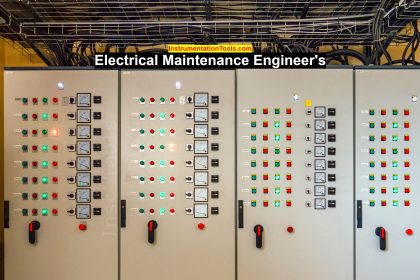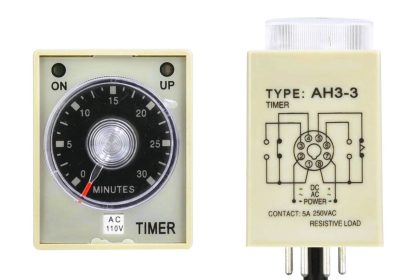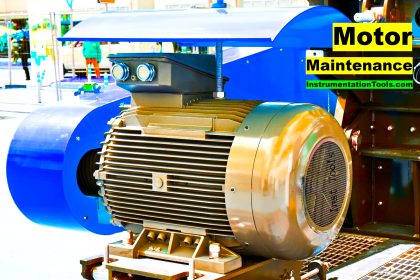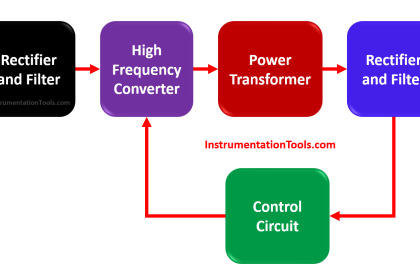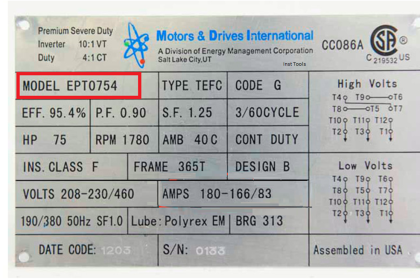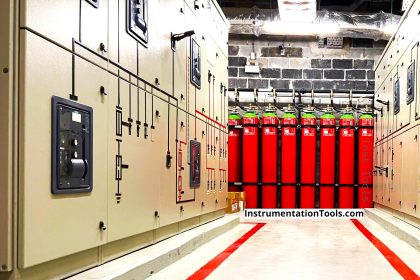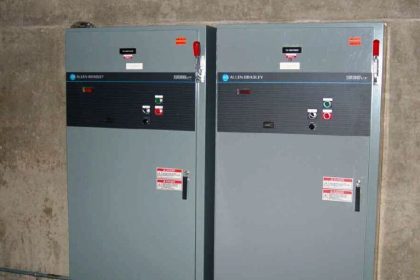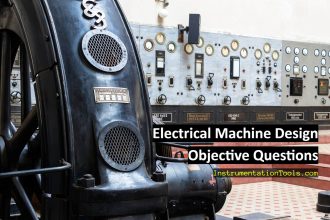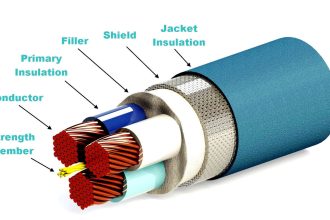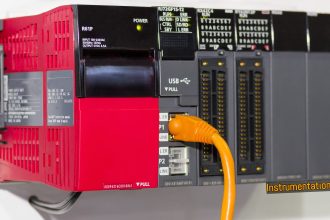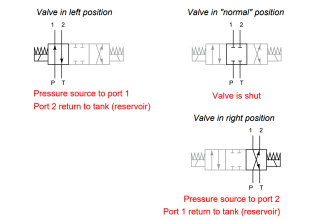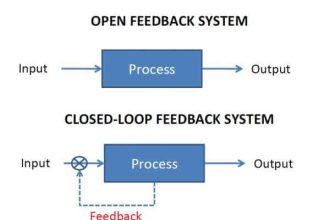Electrical motors are one of the most widely used equipment in almost each and every application ranging from manufacturing materials in large-scale industries to small toys used by kids.
Various types of electric motors like DC motors, stepper motors, synchronous motors, induction motors, and servo motors are available in the market, which are differentiated on the basis of their functionality and the supply required for their proper functioning.
In past, we already touched upon the topic of the difference between the Stepper motor and the DC motor.
Today in this article we will learn the difference between the Servo motor and the DC motor.
Servo Motor
The Servo motor is a kind of closed-loop control system. This means that the servo motor will produce good precise outputs.
The servo motor gives precise output in terms of angular velocity, position, and acceleration. For performing this task of precise output control, the servo motor has a controller, a feedback position sensor, and a motor.
The feedback position sensor is usually an encoder. The controller controls the output of the servo motor after receiving the input and comparing it to the output position via a position feedback sensor. The servo motor can be either an AC servo motor or a DC servo motor.
DC Motor
DC motors work on the DC power supply. DC motor is one of the simplest forms of the electrical motor that converts the DC (Direct Current) electrical energy into rotary motion. The DC motor has a very simple construction.
The DC motor consists of a stator and an armature. The stator is a stationary part of the motor and the armature or the rotor rotates on an axis. The DC motor provides continuous 360-degree rotational motion when the supply to the DC motor is turned ON.
Mainly 2 types of DC motors are available. One is a brushed DC motor and the other is a brushless DC motor.
Difference between Servo Motor and DC Motor
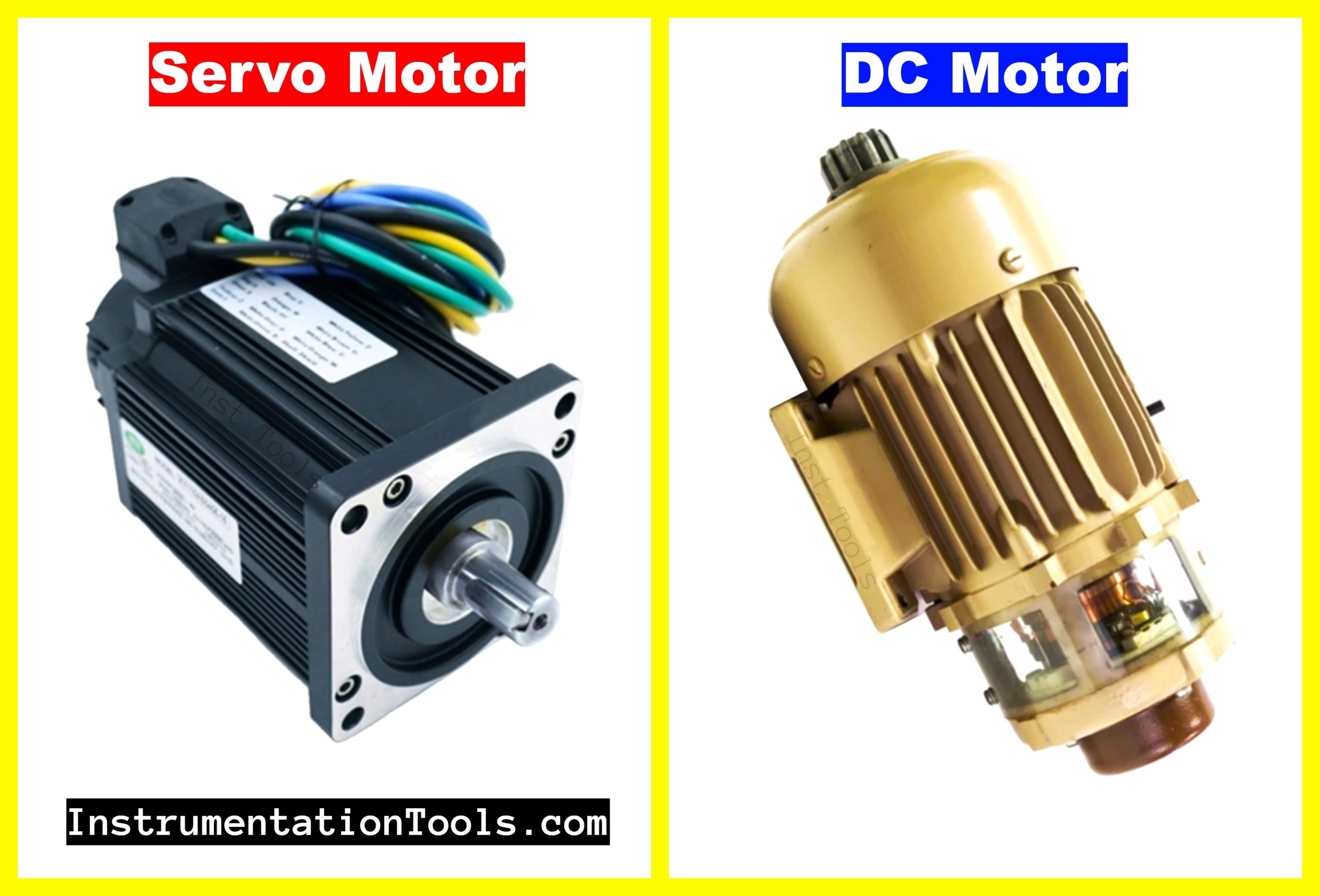
Now let us see some differences between the Servo motor and the DC motor
| Servo Motor | DC Motor |
| The servo motor mainly provides precise position control as and when required | The DC motor is used for the continuous rotational motion to drive the load connected to it. |
| The servo motor does not move continuously. The motion of the servo motor is limited to 180 degrees. | The DC motor moves continuously in rotational motion at 360 degrees |
| The Servo motor can be a brushed servo motor or brushless servo motor | DC motor can also be brushed DC motor and brushless DC motor |
| The servo motor has 3 cables for its working i.e. power cable, ground cable, and control cable | The DC motor has only 2 cables for its working i.e. power cable and ground cable |
| The servo motor is used to produce an accurate and precise output in terms of position | The DC motor rotates continuously until it has a power supply connected to it. |
| The servo motor is controlled by a controller which receives feedback from the position feedback sensor | The DC motor does not have any controller or position feedback sensor. DC motor can be controlled by a simple switch. |
| The servo motors have a comparatively high torque output | The DC motors have a comparatively low torque output. |
| The application of the servo motor are robotic arms, legs, etc | The applications of the DC motor are rotating equipment like fan, toys, etc |
If you liked this article, then please subscribe to our YouTube Channel for Electrical, Electronics, Instrumentation, PLC, and SCADA video tutorials.
You can also follow us on Facebook and Twitter to receive daily updates.
Read Next:
- What is an HRC Fuse?
- SCADA in Power System
- What is a Buchholz Relay?
- Motor Winding Sensors
- Electrical Panel Bus Coupler
